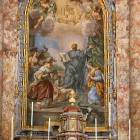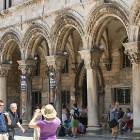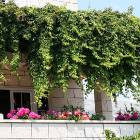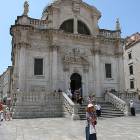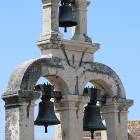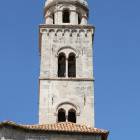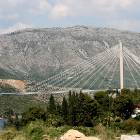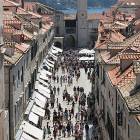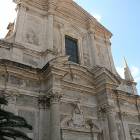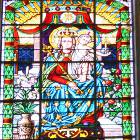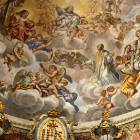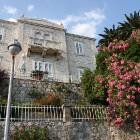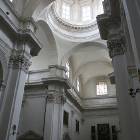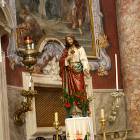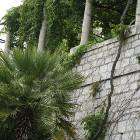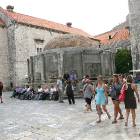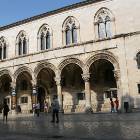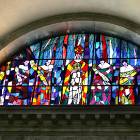Memorable places in Dubrovnik
For most of the cities around the Adriatic the Italian hegemony in the Middle Ages was beneficial. The influx of sculptors, architects and painters from various cities like Florence, Rome or Venice meant tasteful housing for the upper class and some impressive landmark buildings, mainly churches. Dubrovnik is no exception, since for centuries Latin, than Italian was the local language, the elite using it even when the Slavs started to be more numerous.
One of the many Italian artists who embellished Dubrovnik was Onofrio di Giordano della Cava, who had a key role in shaping to iconic constructions: the Rector’s Palace and the water reservoir that became known as the Fountain of Onofrio. This is still used today by tourists who want to clench their thirst. With its round shape and very large size, with benches around, it also acts as a meeting point. It is very close to one of the gates in the city walls, being considered the center of the city.
The Rector was elected as first among equals, in the collective ruling organism of Republic of Ragusa, as Dubrovnik was known for hundreds of years. The Rector had mainly representative and ceremonial assignments, so the institution needed an impressive headquarter. Numerous artists worked for this palace, building and rebuilding it after subsequent earthquakes, employing different styles, from Gothic, to Renaissance and some Baroque. The row of columns with carved capitals still impress today through beauty and imaginative decorations. It is an example of Gothic creativity, a style that allowed for various craftsmen to give their best. Like in the Doge’s Palace in Venice, with which it resembles in elegance, you notice that elements change from one column to another, harmoniously put together like in a symphony. The Renaissance changed all this, and brought forward the artists of genius, with unified vision. The carvers had to follow a given pattern instead, and this was seen by some as a loss and a change in mentality. Today, the Rector’s Palace is used as a museum.
Like any medieval city, Dubrovnik was also gathered around some representative churches. The largest is the Cathedral dedicated to the Assumption of Virgin Mary. A fresco by Titian with the subject of the Assumption is the most important art object inside the large Baroque cathedral. With a smaller dome and a similar facade, another church, near Rector’s Palace, is dedicated to St Blaise, the patron saint of Dubrovnik.
- Home Page
start page - Architecture
landmark buildings - Sacred architecture
places of worship - Nature
landscape photography - Concert
performing artists - Christmas
Santa Claus pictures
- Jooble
jobs for photographers - Escape
an out of control blog - Merry Christmas
The best organizer of Christmas parties - Astro photo
Eclipse hunting and astrological photography

